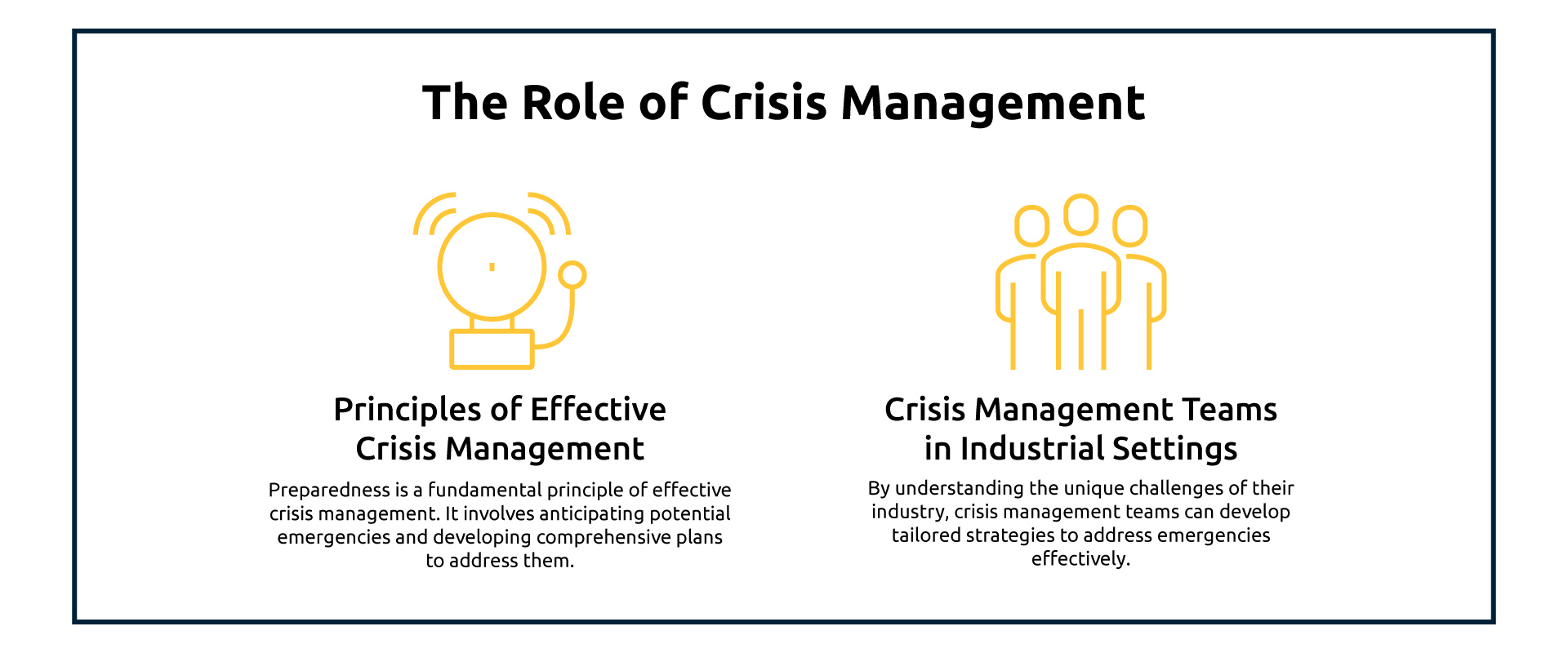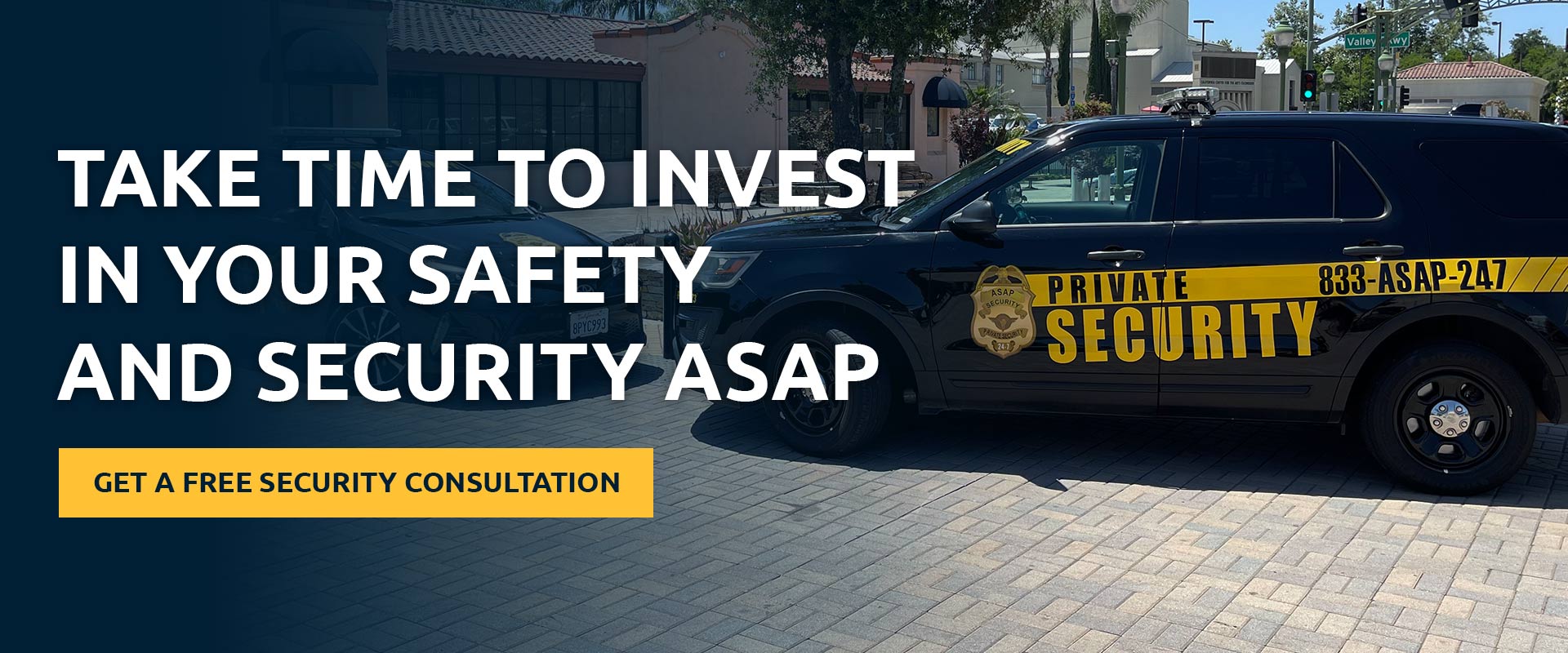In today’s rapidly evolving industrial landscape, the importance of crisis management and armed security in ensuring the safety and protection of industrial facilities cannot be overstated. With the potential for emergencies and disasters to occur at any given moment, it’s crucial for organizations to have a comprehensive understanding of industrial emergencies and the role that crisis management and armed security play in mitigating these risks. This article aims to delve into the intricacies of crisis management and armed security in industrial emergencies, highlighting their significance and providing valuable insights.
 Understanding Industrial Emergencies
Understanding Industrial Emergencies
Industrial emergencies refer to unexpected events that pose significant risks to the safety, operations, and assets of industrial facilities. These emergencies can range from natural disasters such as floods, earthquakes, and fires, to man-made disasters such as chemical spills, explosions, and acts of terrorism.
When it comes to industrial emergencies, being prepared is crucial. Facilities must have robust emergency response plans in place to ensure the safety of their employees, minimize damage to property, and prevent any negative impact on the surrounding environment.
Defining Industrial Emergencies
Industrial emergencies can be defined as unforeseen incidents that occur within industrial settings and have the potential to cause harm to people, property, and the environment. These emergencies can disrupt normal operations, leading to financial losses and reputational damage for the affected facility.
Understanding the different types of industrial emergencies is essential for developing effective response strategies. By identifying potential risks and vulnerabilities, industrial facilities can implement preventive measures and establish protocols to mitigate the impact of emergencies.
Common Causes of Industrial Emergencies
It is imperative to comprehend the common causes of industrial emergencies to effectively address and mitigate potential risks. Some of the major causes include equipment failure, human error, inadequate safety protocols, inadequate maintenance practices, and unforeseen events such as extreme weather conditions.
Equipment failure is a significant cause of industrial emergencies. Malfunctioning machinery or faulty equipment can lead to accidents, fires, or explosions, putting both employees and the facility at risk. Regular inspections, maintenance, and proper training can help prevent equipment failures and minimize the chances of emergencies.
Human error is another common cause of industrial emergencies. Mistakes made by employees, such as improper handling of hazardous materials or failure to follow safety procedures, can result in accidents or environmental contamination. Training programs, strict adherence to safety protocols, and effective communication can help reduce the occurrence of human errors.
Inadequate safety protocols and maintenance practices can also contribute to industrial emergencies. Facilities that do not have comprehensive safety plans or fail to conduct regular inspections and maintenance are more susceptible to accidents and emergencies. Implementing robust safety protocols and ensuring proper maintenance of equipment and infrastructure are essential preventive measures.
Additionally, unforeseen events such as extreme weather conditions can trigger industrial emergencies. Severe storms, floods, or earthquakes can cause structural damage, power outages, or transportation disruptions, leading to emergency situations. Being aware of the potential risks associated with extreme weather and having contingency plans in place can help minimize the impact of such events.
In conclusion, understanding industrial emergencies and their causes is crucial for effective emergency preparedness and response. By identifying potential risks, implementing preventive measures, and establishing comprehensive emergency plans, industrial facilities can protect their employees, assets, and the environment from the devastating consequences of emergencies.
 The Role of Crisis Management
The Role of Crisis Management
Crisis management is a critical aspect of any organization’s operations. It involves a systematic approach to identifying, assessing, and responding to emergencies in a timely and efficient manner. Effective crisis management requires proactive planning, clear communication channels, and well-defined roles and responsibilities for crisis management teams. By adhering to the principles of preparedness, response, recovery, and continuous improvement, organizations can effectively navigate through crises and minimize their impact.
Principles of Effective Crisis Management
Preparedness is a fundamental principle of effective crisis management. It involves anticipating potential emergencies and developing comprehensive plans to address them. This includes conducting risk assessments, identifying vulnerabilities, and establishing protocols for emergency response. By being prepared, organizations can minimize the impact of crises and ensure a swift and coordinated response.
Response is another crucial principle of crisis management. When an emergency occurs, organizations must be able to respond promptly and effectively. This requires clear communication channels, well-trained crisis management teams, and the ability to mobilize resources efficiently. By having a structured and coordinated response, organizations can mitigate the impact of crises and protect their employees, assets, and reputation.
Recovery is an essential phase in crisis management. After the initial response, organizations must focus on recovering from the crisis and restoring normal operations. This involves assessing the damage, implementing recovery plans, and addressing any lingering issues. By prioritizing recovery efforts, organizations can minimize downtime, restore customer confidence, and resume business operations as quickly as possible.
Continuous improvement is a principle that emphasizes learning from past crises and refining crisis management strategies. Organizations should conduct post-crisis evaluations to identify areas for improvement and implement necessary changes. By continuously evaluating and enhancing crisis management plans, organizations can enhance their resilience and readiness to handle future emergencies.
Crisis Management Teams in Industrial Settings
In industrial settings, crisis management teams play a pivotal role in mitigating the impact of emergencies. These teams consist of individuals with diverse expertise and skills, who are responsible for developing and implementing crisis response plans. They conduct thorough risk assessments to identify potential hazards and vulnerabilities specific to the industry. By understanding the unique challenges of their industry, crisis management teams can develop tailored strategies to address emergencies effectively.
Monitoring emergency situations is a critical responsibility of crisis management teams in industrial settings. They closely monitor various factors such as equipment malfunctions, chemical spills, natural disasters, and other potential emergencies. By staying vigilant and proactive, these teams can detect early warning signs and initiate appropriate response measures to prevent or minimize the impact of crises.
Coordinating resources is another crucial role of crisis management teams in industrial settings. They ensure that necessary resources, such as personnel, equipment, and supplies, are readily available during emergencies. This includes establishing communication channels with external stakeholders, such as emergency response agencies and regulatory bodies, to facilitate a coordinated and efficient response.
Facilitating communication between various stakeholders is a key responsibility of crisis management teams. They act as a central point of contact, disseminating information to employees, management, and external parties. Effective communication ensures that everyone is well-informed, enabling swift decision-making and a cohesive response to the crisis.
In conclusion, crisis management is an integral part of organizational resilience. By adhering to the principles of preparedness, response, recovery, and continuous improvement, organizations can effectively navigate through crises and minimize their impact. In industrial settings, crisis management teams play a vital role in mitigating the impact of emergencies by developing and implementing crisis response plans, conducting risk assessments, monitoring emergency situations, coordinating resources, and facilitating communication between various stakeholders.
 Importance of Armed Security During Emergencies
Importance of Armed Security During Emergencies
Duties of Armed Security Personnel
Armed security personnel play a critical role in maintaining safety and security during industrial emergencies. Their duties encompass protecting personnel and assets, deterring potential threats, maintaining order, and facilitating the evacuation of individuals in high-risk situations. Their presence acts as a deterrent to potential intruders and helps ensure a swift and secure response to emergencies.
Training and Preparedness of Armed Security
To effectively carry out their duties, armed security personnel must undergo rigorous training and remain prepared for any eventuality. This includes training in emergency response procedures, crisis communication, first aid, and the use of specialized equipment. Regular drills and simulations help enhance their preparedness and enable them to respond effectively in high-stress situations.
 Coordinating Crisis Management and Armed Security
Coordinating Crisis Management and Armed Security
Communication Strategies for Effective Coordination
Effective coordination between crisis management teams and armed security personnel is paramount to ensure a synchronized and efficient response to industrial emergencies. Communication strategies, such as establishing clear lines of communication, utilizing technology for real-time updates, and conducting regular briefings, are essential in facilitating coordinated efforts and ensuring rapid decision-making.
Challenges in Coordination and Possible Solutions
Coordinating crisis management and armed security personnel can be challenging due to various factors, including the complexity of emergency situations, the involvement of multiple stakeholders, and time constraints. To overcome these challenges, organizations must foster a culture of collaboration, implement robust communication protocols, provide continuous training, and conduct regular joint exercises and drills to enhance coordination and effectiveness.
 Evaluating the Effectiveness of Crisis Management and Armed Security
Evaluating the Effectiveness of Crisis Management and Armed Security
Key Performance Indicators for Crisis Management
Evaluating the effectiveness of crisis management is crucial to identify areas of improvement and enhance future response capabilities. Key performance indicators (KPIs) such as response time, incident resolution time, successful evacuations, casualty rates, and post-incident review findings are instrumental in measuring the efficiency and effectiveness of crisis management efforts.
Assessing the Performance of Armed Security
To ensure the optimal performance of armed security personnel during industrial emergencies, their effectiveness must be regularly assessed. This can be done through comprehensive evaluations that consider factors such as adherence to emergency protocols, situational awareness, response times, teamwork, and the mitigation of potential threats. Feedback from stakeholders and incident investigations also play a vital role in assessing armed security performance.
In conclusion, crisis management and armed security are integral components of industrial emergency preparedness and response. Understanding the nature of industrial emergencies, the principles of effective crisis management, and the key responsibilities of armed security personnel is essential for organizations aiming to protect their workforce, assets, and reputation. By fostering coordination, implementing best practices, and continuously evaluating performance, organizations can enhance their ability to effectively manage industrial emergencies and ensure the safety and security of all stakeholders involved. Take time to invest in your safety and security ASAP. Get a free security consultation from ASAP Security today!
Reach out to ASAP Security now for any questions or if you need a quote.
We are proud of our stellar customer service record, so check our website for all the testimonials from our various satisfied customers. Call ASAP Security at 1-833-272-7247

 Understanding Industrial Emergencies
Understanding Industrial Emergencies The Role of Crisis Management
The Role of Crisis Management Importance of Armed Security During Emergencies
Importance of Armed Security During Emergencies Coordinating Crisis Management and Armed Security
Coordinating Crisis Management and Armed Security Evaluating the Effectiveness of Crisis Management and Armed Security
Evaluating the Effectiveness of Crisis Management and Armed Security